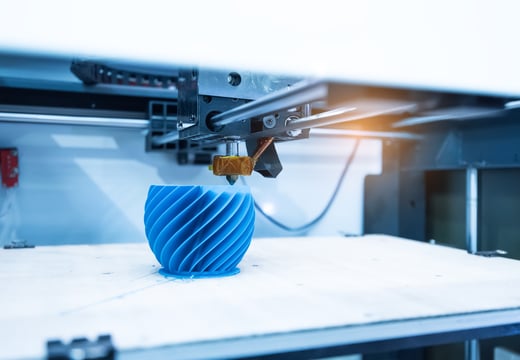
Desirable, Viable, Feasible - what the best innovators are doing right now
January 2024
by the 42T Innovation Team
Within product innovation, the Desirable, Viable, Feasible (DVF) framework is rapidly becoming a cornerstone for successful product development. Currently, the most successful innovation projects use development processes that follow the DVF multi-stream development approach. This approach is reshaping how companies navigate complex market landscapes and seize high-potential business opportunities.
DVF represents a multi-stream development approach that simultaneously addresses three critical dimensions simultaneously: Desirability (user appeal), Viability (commercial potential), and Feasibility (technical possibility).

Unlike traditional sequential development models like the ‘waterfall’ approach, where substantial effort is applied to one aspect before even high level de-risking is carried out in the other; DVF operates in an agile, iterative format, allowing for concurrent exploration and risk mitigation across these domains. This comprehensive approach not only accelerates the innovation process but also ensures that products are aligned with market demands, are economically sustainable, and are technically achievable, making later stage gates easier to clear.
Adopting the DVF model marks a significant shift in organisational structure and decision-making. It encourages a fail-fast mindset, where potential issues are identified and addressed early in the development process, reducing overall risk and investment costs.
The relevance of this framework is already evident across various sectors, demonstrating the crucial need for alignment among all three aspects to ensure successful product innovation.
This model cultivates greater confidence in pursuing ambitious and divergent innovation paths, beyond the historically more comfortable incremental improvements. As companies integrate DVF into their processes, we expect to see an acceleration towards more evidence-based assessments in the initial stages of product development. This includes methods like engagement monitoring, consumer trialling, and A-B testing of product concepts, often through digital platforms like social media.
Connected devices developed specifically for consumer testing phases highlight the importance of understanding desirability and feasibility early in the development cycle. Companies are increasingly creating connected devices, including for products that are not inherently electronic, specifically for the consumer testing phase. This approach allows for real-time feedback on both the appeal (desirability) and functionality (feasibility) of a product before it reaches the market, significantly reducing the risk of launching products that fail to resonate with consumers or meet practical expectations.
The technology sector, particularly IoT and cloud-connected devices, demonstrates the challenges of aligning technical feasibility with commercial viability. Many first-generation IoT products, despite being technologically advanced (feasible) and appealing to consumers (desirable) failed due to unsustainable business models, highlighting the critical need for a balanced DVF approach.
High-profile cases like Google Glass showcase the pitfalls of neglecting desirability despite technical feasibility, leading to limited market success. Google Glass, despite its technological sophistication and initial excitement, failed to fully consider consumer desirability in terms of social acceptability and privacy concerns, especially in a high-cost rollout with few apps and, therefore, little functionality, leading to failure in the market.
These examples highlight the importance of a comprehensive approach in product innovation. Focusing solely on technological feasibility without considering market desirability or commercial viability can result in innovative yet unsuccessful products. Conversely, appealing products lacking financial sustainability or technical feasibility are unlikely to survive. The DVF framework offers a balanced process enabling synergies and aligning all facets of product development to enhance the likelihood of success in the competitive market. Neglecting any aspect of DVF can jeopardise a product’s market success, underlining the critical need for this balanced approach.
As DVF becomes standard practice, we anticipate a significant evolution in organisational structures to better support this framework.
The silo team structures which are currently prevalent will give way to more integrated models that embody the DVF process. This trend will also influence how companies approach technology-driven projects, emphasising the importance of exploring desirability and commercial viability alongside technical development. Without adopting DVF, organisations risk falling behind in an increasingly competitive and innovation-driven market.
The DVF framework is more than just a trend, it’s a radical change in how innovation is approached and executed. For businesses looking to lead in their respective markets, adopting DVF is not just beneficial – it is imperative. At 42T, we are at the forefront of this shift, guiding our clients to harness the full potential of DVF. By balancing desirability, viability, and feasibility throughout the innovation process, companies can innovate more effectively, reduce risks, and achieve sustainable success in the competitive business landscape of tomorrow.
At 42T, we have modelled, facilitated and evolved this transformative process, witnessing how DVF aligns products with market needs, commercial realities, and technological possibilities.
Was this trend article useful? Have a challenge of your own?
Email answers@42technology.com or give us a call on +44 (0)1480 302700.
Share this article:
Related Articles

Innovation, Product Design
Embracing innovation: the future of product development

Sustainability, 2024 Technology Trends
Wave of change - embracing sustainability regulations for business growth

Sustainability, 2024 Technology Trends
Powering a sustainable future - embracing clean electricity and sustainable energy practices

What will you ask us today?
We believe in asking the right questions to drive innovation; when we know the right questions, we generate the ideas to answer them.





